Best Indoor Plants for a Pest-Free, Joy-Filled Home
I have never thought of myself as a plant mom. Keeping indoor plants alive and pest-free always felt like such a chore, too much work—until my sweet mother passed away in January 2023, leaving behind her beloved house plants. At first, I kept them out of sentiment, desperately trying to hold on to them simply because she loved them. She had the ultimate green thumb with rooms full of the best indoor plants! She always tried to teach me how to tend to them, and as she aged I often helped her repot and propagate (dividing and replanting) them. So, continuing to care for her plants was my way of holding on to a piece of her.
Over the past 2 years, I realized plants brought me more than just memories. Their quiet presence filled my home with beauty, warmth, and an unexpected sense of joy. They remind me daily of her love and the simple happiness of nurturing something that grows. I have lost of few of her plants to disease and pests, but have also purchased new ones and learned to care for them, just as she did.
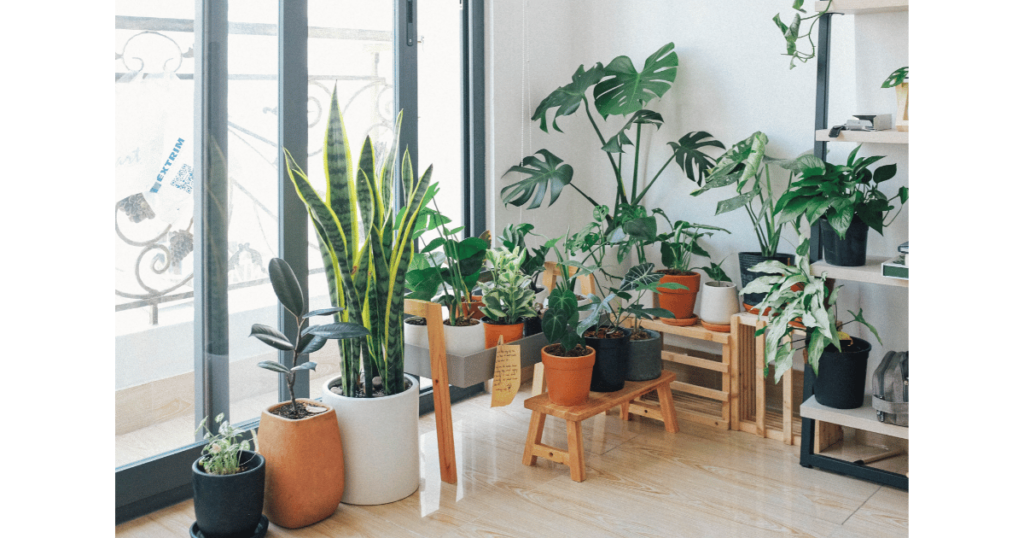
The Joy of a Pest-Free Home: Best Indoor Plants for a Lush, Bug-Free Space
A home filled with happy, healthy plants isn’t just visually appealing—turns out it’s a mood booster. Studies show indoor plants reduce stress, induce calm, and enhance overall well-being. I am on a forever mission to lower my cortisol, so adding plants to my indoor environment helps with that.
The above article states that “integrating plant care into their routines can serve as a grounding practice, providing a sense of purpose and connection to the natural world”.
Remember our mission–Cultivate a life of joy by embracing small, intentional moments every day! See this post to see the relevance.
5 Best Indoor Plants
A house filled with plants feels alive, cozy, and joyful. But nothing zaps that joy faster than discovering tiny, unwanted pests crawling on your beloved jade plant or hovering around your kitchen like uninvited guests. The good news? You don’t have to choose between a bug-free home and a lush, green sanctuary. Some indoor plants are naturally resistant to pests, and with a few simple tricks, you can keep the most common bugs away from your leafy friends.
Let’s talk about the best indoor plants that won’t attract pests, the most common houseplant bugs (and how to spot them), and easy, organic pest control methods to keep your plants and home bug-free.
If you want to enjoy the beauty and benefits of indoor plants without constantly fighting pests, here are the best plants to experience the joy of greenery in your home:
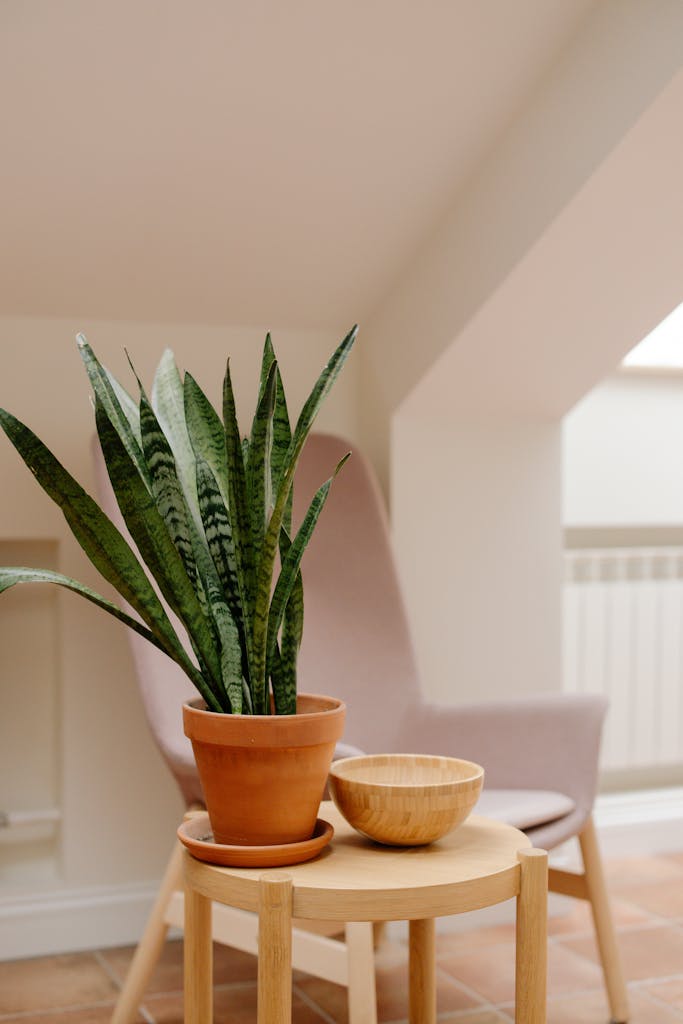
1. Snake Plant (Sansevieria)
The snake plant (AKA Mother-in-Law’s Tongue) is practically indestructible, requires minimal maintenance, and is naturally resistant to most common bugs. My mother always had snake plants around the house–and now I see why! Its thick, waxy leaves make it difficult for pests like spider mites and adult fungus gnats to take hold of its tough leaves. Plus, it thrives in dry soil (lucky for me because I always forget to water), which helps prevent infestations.
Snake plants are also excellent at purifying the air, so you get the added bonus of fresh, clean oxygen. They’re perfect for beginners and busy individuals, and their vertical leaves give a stylish, modern touch to any room. Adding a snake plant to your home is an investment in simplicity and beauty.
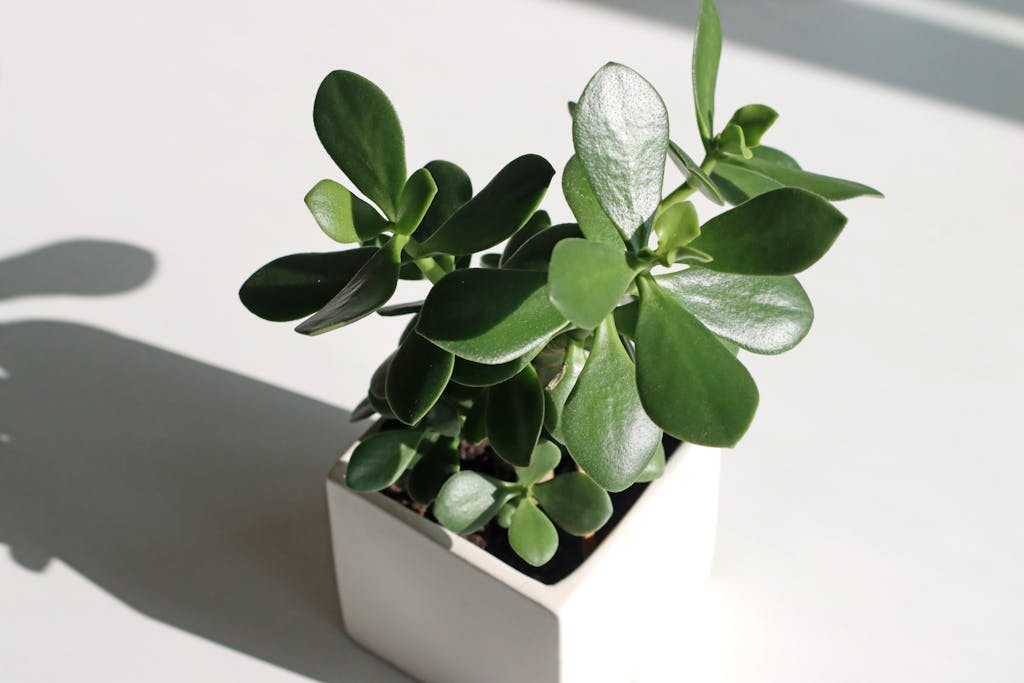
2. Jade Plant (Crassula ovata)
Jade plants are not only stunning and low-maintenance, but their fleshy, thick leaves deter many plant pests. This plant prefers dry soil and bright natural light, making it less susceptible to fruit flies, fungus gnats, and other moisture-loving pests. Just be sure not to overwater them, as excess moisture can attract unwanted bugs.
Jade plants are also known for bringing good luck and prosperity (bonus), so they’re not just an aesthetic addition to your home–they’re practically a good omen! Since they grow slowly, they’re perfect for people who don’t want to worry about constant pruning or repotting. Additionally, Jade plants are often passed down through generations, and their durability makes them ideal for homes where busy people are just beginning to embrace plant care.

3. Cast Iron Plant (Aspidistra elatior)
The cast iron plant gets its name for a reason—it’s durable and can handle neglect (forgetting to water). Even better, it’s naturally resistant to most pests, making it a fantastic choice for a bug-free home. It thrives in low light and can go weeks without watering, making it perfect for busy plant lovers. Plus, this plant has a classic, elegant look with its dark green, glossy leaves that add a touch of sophistication to any room. The cast iron plant is ideal for darker corners where other plants might struggle. It’s a true “set it and forget it” plant, giving you one less thing to worry about in your busy lifestyle.
It thrives in low light conditions and can go without a drink for much longer than most plants, making it perfect for areas where other plants may wilt. I placed mine in a small nook by my reading chair, where it thrives without the need for constant attention. It’s truly the definition of a “low-maintenance” plant, yet it adds a rich, green vibe to my home without demanding anything in return.
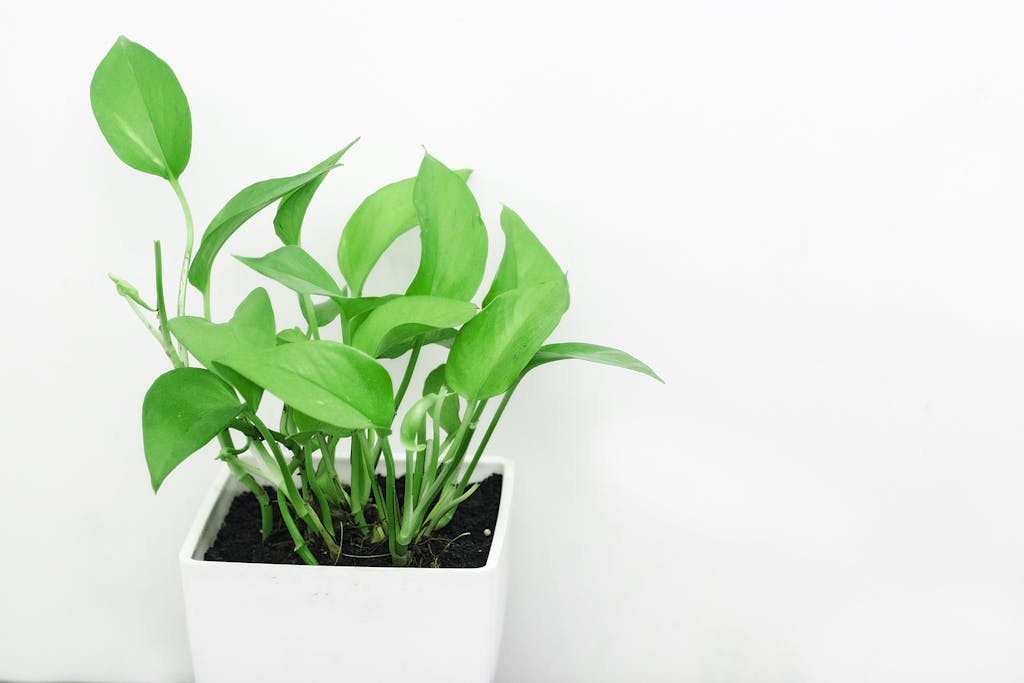
4. Pothos Plant (Epipremnum Aureum)
Pothos plants are known for their trailing vines and air-purifying qualities. They’re also relatively pest-resistant, especially when kept in dry conditions. If you ever notice signs of pests, a quick rinse of the leaves over the sink with soapy water or neem oil will do the trick. Pothos is also one of the best plants for beginners since it’s very adaptable and can tolerate a wide range of environments, from low light, bright light, or even artificial light. Its cascading vines are perfect for shelves or hanging baskets, adding a lush, full appearance to your space.
The Pothos plant is a reliable, easy-care companion that enhances your home with both beauty and functionality. For me, Pothos represents the effortless beauty that comes with a relaxed approach to plant care. It has a way of trailing down from a small space on a shelf, creating a full, lush cascade of greenery without needing to fuss over it. Pothos plants are perfect for creating a sense of life and movement in your home. And just like the snake plant, Pothos offers the added benefit of purifying the air, making your living space feel fresher and more inviting.
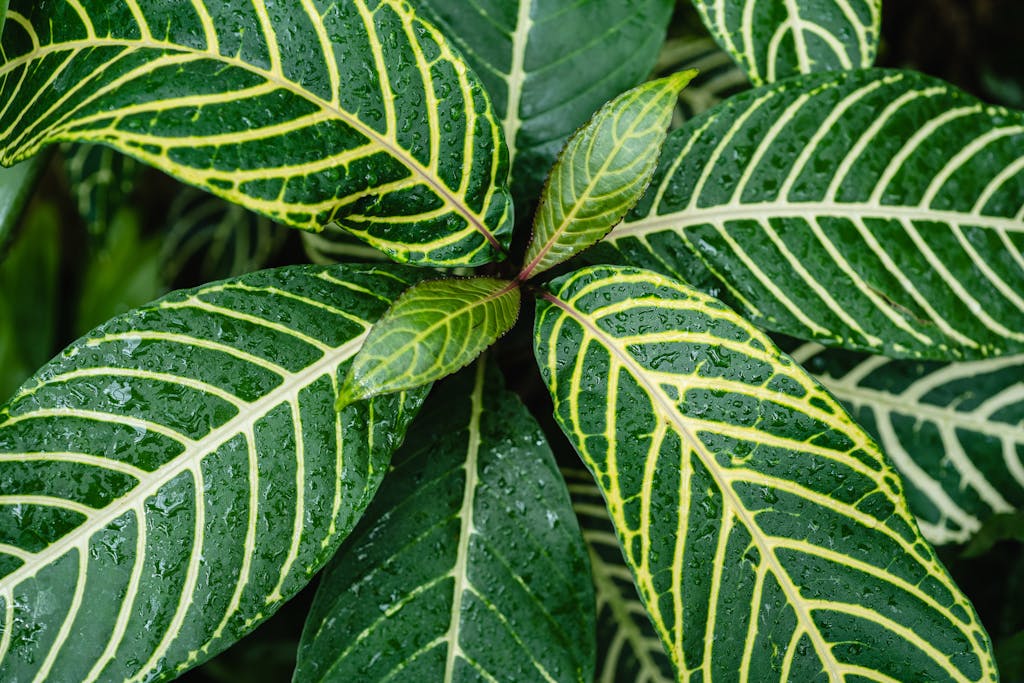
5. Zebra Plant (Aphelandra squarrosa)
The zebra plant adds a striking visual element to any room with its bold, striped leaves. It’s not only an attractive plant, but it is also resilient against most common bugs, as long as you don’t overwater. An occasional misting with essential oil-infused water can help keep pests away while making your space smell amazing. The misting won’t bother it since it enjoys moderate humidity. With its bright yellow-orange blooms, the zebra plant can brighten up your space during its flowering season, making it a perfect choice for those looking to introduce some color and personality into their decor.
This plant is ideal for those who want a beautiful, low-maintenance option that is still a bit of a showstopper. The zebra plant’s statement foliage makes it a focal point in any room. I love how it stands out with its distinct stripes, bringing a sense of energy and style to my home. What’s more, its resistance to pests allows me to focus on enjoying its beauty rather than constantly worrying about keeping bugs at bay. When in bloom, the zebra plant offers a stunning pop of yellow and orange, creating a joyful atmosphere in my living space. This plant hits the perfect balance between style and practicality.
The Most Common Houseplant Pests (And How to Spot Them)
Even with the most pest-resistant plants, it’s still good to know what to look for when it comes to plant pests. Let’s take a closer look at the usual suspects to be on the lookout for:
- Spider Mites – These tiny bugs create fine webbing on leaves and cause yellowing or speckled leaves. They thrive in dry soil conditions.
- Adult Fungus Gnats – These small, flying insects hover around moist soil and lay eggs that hatch into larvae, feeding on plant roots. Be cautious when repotting with fresh soil, because adult gnats can sometimes be present in the bags you purchase.
- Fruit Flies – Often confused with fungus gnats, these are more attracted to rotting fruit and sugary substances but can still be found near overwatered plants.
- Aphids – These are small, pear-shaped insects that cluster on new plant growth and suck the plant sap from stems and leaves. Be sure to check the undersides of leaves when checking for pests.
- Mealybugs – Tiny, white bugs that hide in leaf crevices and rob your plants of vital nutrients.
5 Ways to Remove Pests From Your Best Indoor Plants
If you start seeing signs of pests, don’t panic! You don’t have to rely on commercial insecticidal soap or systemic insecticides to keep your plants pest-free. There are plenty of non-toxic, natural solutions that are just as effective without the harsh chemicals.
Here are 5 easy, natural ways that I have used to get rid of pests and maintain healthy indoor plants:
- 1. Neem Oil Spray
Neem oil is an all-natural, organic pest control method that works wonders on spider mites, aphids, and mealybugs. Mix a few drops with water and spray it on the affected leaves.
- 2. Soapy Water Rinse
A simple mix of mild dish soap and water can help wash away pests like aphids and spider mites. Using a spray bottle, spray the solution on the leaves and rinse the leaves lightly under the sink after a few hours to prevent residue buildup.
- 3. Yellow Sticky Traps
Adult fungus gnats and fruit flies are drawn to bright yellow sticky traps. Place them near your plants to catch the flying pests before they lay eggs and reproduce.
- 4. Essential Oil Repellents
Certain essential oils, like peppermint, eucalyptus, and tea tree oil, act as natural deterrents for plant pests. It’s a good idea to mix a few drops with water and lightly mist your plants to keep bugs at bay.
- 5. Hydrogen Peroxide
Hydrogen Peroxide can effectively kill gnats, especially the larvae of fungus gnats in the soil by disrupting their life cycle, making it a safe and common method to control gnat infestations on house plants. Always dilute hydrogen peroxide with water before applying it to plants, typically using a ratio of 1 part 3% Hydrogen Peroxide to 4 parts water. Make sure the mixture reaches the root area.
- 6. Adjust Watering Habits
Most common bugs thrive in moist soil, so let your plants dry out between waterings. Overwatering creates the perfect breeding ground for fungus gnats and fruit flies. Aim for a watering schedule that suits your plants’ needs without keeping the soil too damp. I use a soil moisture meter that I purchased from Amazon.
Embrace the Joy of Low-Maintenance, Pest-Free Plants
Bringing plants into your home isn’t just about aesthetics—it’s about creating a joyful, calming space that nurtures your well-being. There’s something deeply joyful about tending to greenery and watching it thrive. By choosing the best indoor plants and taking simple steps to protect them, you can enjoy all the benefits of indoor houseplants—without the bug drama. So go ahead, fill your space with vibrant new plants, savor the cozy, calm atmosphere they create, and enjoy the little moments of joy they bring every day.
Do you have a favorite plant that’s easy to care for and pest-free? Let me know in the comments—I’d love to hear about your plant-loving journey!


